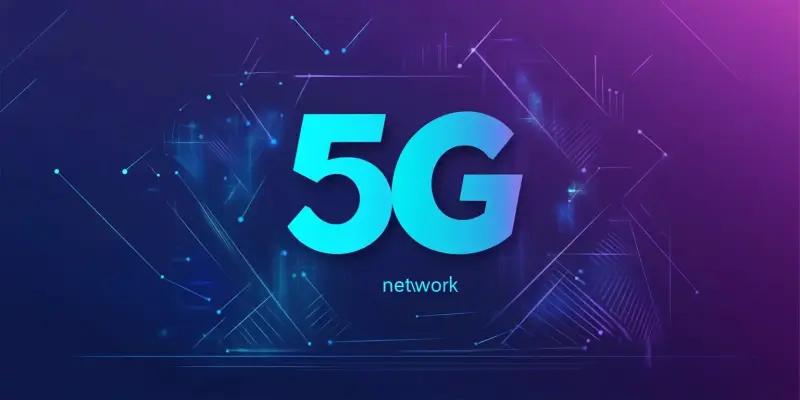The collaboration between Ericsson and Telstra marks a significant milestone in the development of Asia-Pacific’s first programmable 5G network. This partnership is set to enhance Telstra’s radio access network (RAN) through the deployment of Ericsson’s next-generation Open RAN-ready hardware solutions and advanced 5G software. Under this initiative, artificial intelligence (AI) and automation will be integrated to optimize network management through self-detection and self-healing capabilities. Telstra aims to establish one of the most advanced, resilient, and reliable 5G infrastructures available globally, which will enable sophisticated application development and superior connectivity tailored to diverse customer needs. Instruments like external tech innovators are set to leverage the network via application programming interfaces (APIs), transforming performance-based connectivity options into avenues for innovation and telecom industry monetization.
Advanced 5G Infrastructure and AI Integration
Telstra’s ambition to establish a cutting-edge 5G infrastructure will bring substantial enhancements to connectivity and application development. A critical aspect of this network revolution involves integrating programmable capabilities that allow advanced features and adaptability. By adopting the latest Ericsson Open RAN-ready Massive MIMO radios and RAN Compute solutions, Telstra ensures enhanced service delivery, operational efficiency, and overall network performance. Additionally, deploying AI-powered technologies such as the Ericsson Intelligent Automation Platform (EIAP) will streamline network management and automation processes, significantly benefiting multi-vendor and multi-technology networks spanning 4G and 5G RAN. These advanced automation techniques, driven by AI and machine learning, help optimize operational processes and boost sustainability.
One of the standout aspects of this game-changing collaboration is the strategic participation in Aduna, which helps support API-driven services. By embracing the global movement toward API adoption, Telstra and Ericsson are fostering an environment where external tech developers can create new applications and services that resonate with the market’s evolving needs. Efforts such as these further highlight Telstra’s and Ericsson’s commitment to revolutionizing connectivity and bringing new opportunities to life. This transformative approach introduces a new dimension to 5G networks, permitting a more tailored approach to consumer and enterprise needs. These innovations translate into improvements across service quality, reliability, coverage, and speed.
Key Benefits and Technological Advancements
The technological advancements brought by Telstra and Ericsson through this deployment offer myriad benefits to the telecom industry. The primary objective is to maximize spectrum investments and improve operational efficiency through several technological measures. Firstly, doubling the 5G network capacity stands as a significant achievement, allowing for greater user load management and seamless connectivity under diverse scenarios. In addition, service consistency and reliability will be considerably enhanced, providing users with a dependable and uninterrupted experience. Uplink and downlink speeds will see notable increases, accommodating growing data consumption needs and offering swift access to online services.
The upgrade’s focus transcends technical improvements, moving towards developing customized service experiences for consumers and enterprises. Departing from the traditional standardized service model, the new 5G infrastructure advocates differentiated connectivity. This means end-users can obtain services that precisely match their unique requirements. Furthermore, sophisticated technological use cases will empower various industry verticals, supporting developer innovation and expediting the adoption of Industry 4.0 in sectors like manufacturing, healthcare, and logistics. This integration leads organizations toward more efficient operations, aiding in the global transformation toward smarter and more agile enterprises.
Leadership Insights and Strategic Vision
In highlighting the strategic vision behind this initiative, Vicki Brady, CEO of Telstra, emphasized the importance of addressing increasingly sophisticated needs for technology and connectivity. According to Brady, the escalating demand for mobile data and network capacity necessitates advanced solutions that can cater to diverse and evolving requirements. The partnership with Ericsson enables Telstra to transition from offering a one-size-fits-all service to providing sophisticated use cases and commercial models. This progress translates into a more tailored and differentiated connectivity experience. Tailored solutions help better serve various customer segments, ensuring their distinct needs for speed, reliability, and responsiveness are met.
Echoing these sentiments, Börje Ekholm, President and CEO of Ericsson, stressed the transformative impact of high-performing programmable networks on enterprises and nations. Ekholm pointed out that the upgraded connectivity network would reshape consumer and enterprise experiences fundamentally, creating an ideal environment for developers to use 5G technologies for groundbreaking applications. The collaboration between Telstra and Ericsson underpins a broader strategic vision aimed at enabling stakeholders across Australia—from individual developers to large industries—to thrive in the networked world. Robust and high-performance connectivity ensures the nation remains competitive on the global stage, driving innovation and efficiency within key sectors.
Broader Implications for the Telecom Industry
Telstra aims to build a cutting-edge 5G network to enhance connectivity and application development. A key part of this initiative is integrating programmable features for advanced capabilities and adaptability. By using the latest Ericsson Open RAN-ready Massive MIMO radios and RAN Compute solutions, Telstra is set to improve service delivery, operational efficiency, and overall network performance. The deployment of AI technologies, like the Ericsson Intelligent Automation Platform (EIAP), will streamline network management and automation, benefiting multi-vendor and multi-technology networks across 4G and 5G RAN. These AI-driven automation techniques will optimize operational processes and boost sustainability.
A highlight of this revolutionary collaboration is their strategic involvement in Aduna, supporting API-driven services. By aligning with the global trend of API adoption, Telstra and Ericsson enable external tech developers to create new applications and services that meet evolving market demands. This effort underscores their commitment to advancing connectivity and opening new opportunities. These innovations promise to improve service quality, reliability, coverage, and speed, making 5G more tailored to both consumer and business needs.

